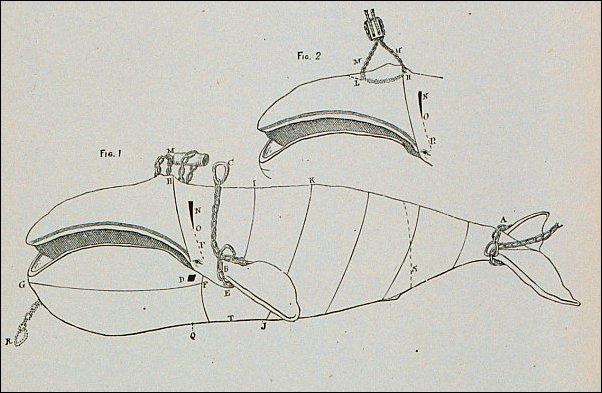|
Whalers,
including the British Greenland whalers removed the blubber at sea.
The process was known as flensing by the British but as cutting-in
by the Yankee whalers. The whale was brought alongside the boat
and then manipulated with a complex set of ropes, pulleys and hooks,
whilst the men flensed away the layers of blubber.
This diagram is American but the principles of supporting the whale
were the same in the British fleet. Note the chains and lines attached
to the flipper, head and tail which were use to stretch the whale
between the bow and stern of the ship. Note also, the attachment
to the Kent, a band of blubber, 2 to 3 feet wide, lying between
the fins and the head, used to turn the whale over. A system of
powerful blocks and pulleys hanging from the head of the main mast
was attached to the kent and was pulled tight by the ship's windlass,
raising the whale in the water.

National
Oceanic and Atmospheric Administration
Cutting in a bowhead whale
|